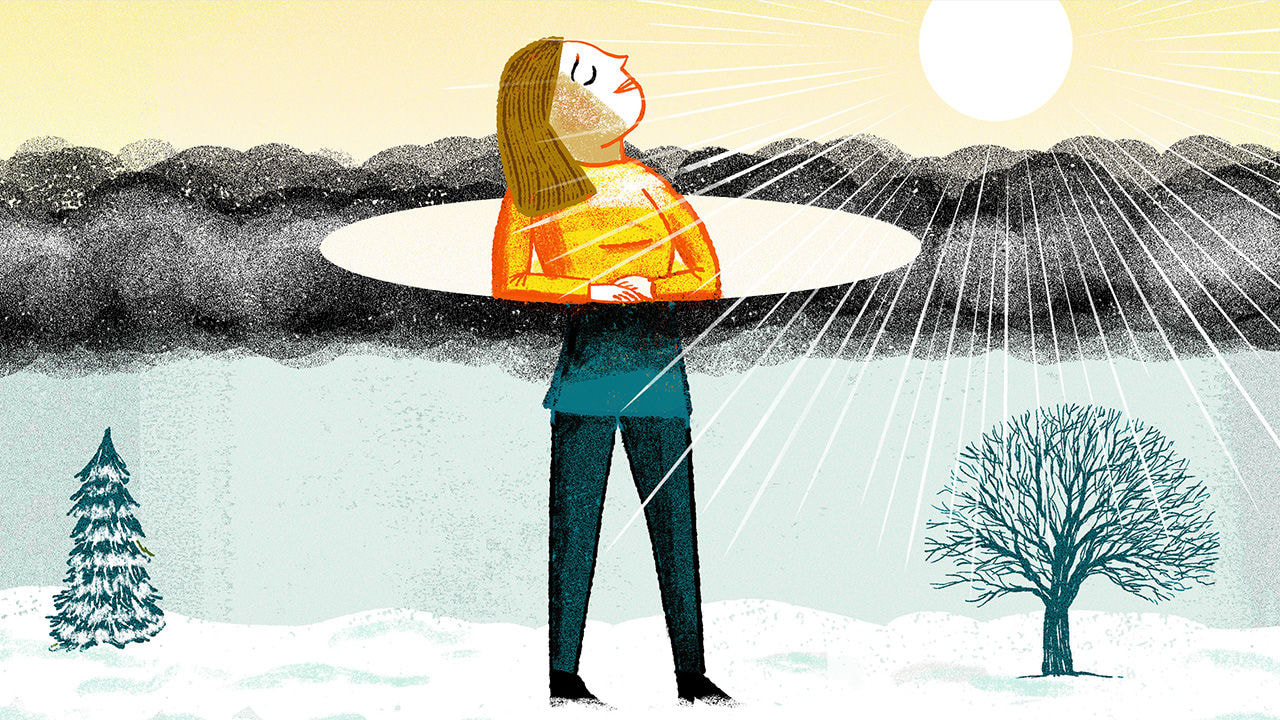|
Do the short, gray days of winter leave you not feeling like your perky old self? It’s normal to experience a bout of the winter blues, but if you routinely feel sad for no reason, have trouble sleeping, and regularly spend your days lounging on the couch, eating comfort food and binge watching your favorite shows, you might be experiencing seasonal affective disorder. SAD, also called seasonal depression, is a form of depression that generally happens in the late fall, when there is less natural sunlight and the days become shorter and colder. (Seasonal depression can also happen in the summer, but that is much less common.)
Women are more likely than men to experience SAD, and it’s more commonly seen in cloudy parts of the country or areas farther away from the equator. Symptoms of SAD include:
Here are three ways you can have a brighter mood and combat SAD this winter. Try an exercise program 1. Most people naturally spend less time outside and, as a result, decrease their physical activity in the winter (because, brrr). But if you think you may have SAD, pushing yourself to exercise is a good way to combat it, says psychologist Scott Bea, PsyD. “Moving your body will compete with that tendency to be sluggish and can produce good brain chemistry,” he says. Look for indoor activities that you enjoy, such as yoga or running on a track or treadmill, or try winter activities like skiing or snowshoeing to make the most of the cold weather. Create social situations 2. During the wintertime, the urge to hunker down and stay home can result in less social interaction, too. If this sounds like you, Dr. Bea recommends that you try to push yourself to regularly connect with others. Often, once you make the effort, social interaction can lift your spirits. Use light therapy 3. Experts believe SAD is triggered by changes in our exposure to sunlight. Studies have shown that daily light therapy, which is sometimes called phototherapy, may help improve mood in 60 to 80% of people with SAD. Light therapy is administered by a device that contains white fluorescent light tubes covered with a plastic screen that blocks ultraviolet rays. Light therapy boxes range in intensity, up to 10,000 lux of light. Many health professionals recommend treating SAD by sitting in front of 10,000 lux light for 30 minutes every morning, Dr. Bea says. It’s generally safe and well-tolerated by most people, but those with certain conditions shouldn’t try it, he explains: “Light therapy is not appropriate for those with conditions such as diabetes or retinopathies or who are taking certain medicines, because of the potential risk of damage to the retina.” Dr. Bea also recommends eating a well-balanced diet, which includes sufficient amounts of vitamins and minerals. “This will help you have more energy even though your body is craving those starchy foods and sweets,” he says. If your depressed mood sticks around for more than two weeks, talk with your doctor. Medication or psychotherapy may also help.
0 Comments
Leave a Reply. |
"Happiness is not by chance, Topics
All
|
